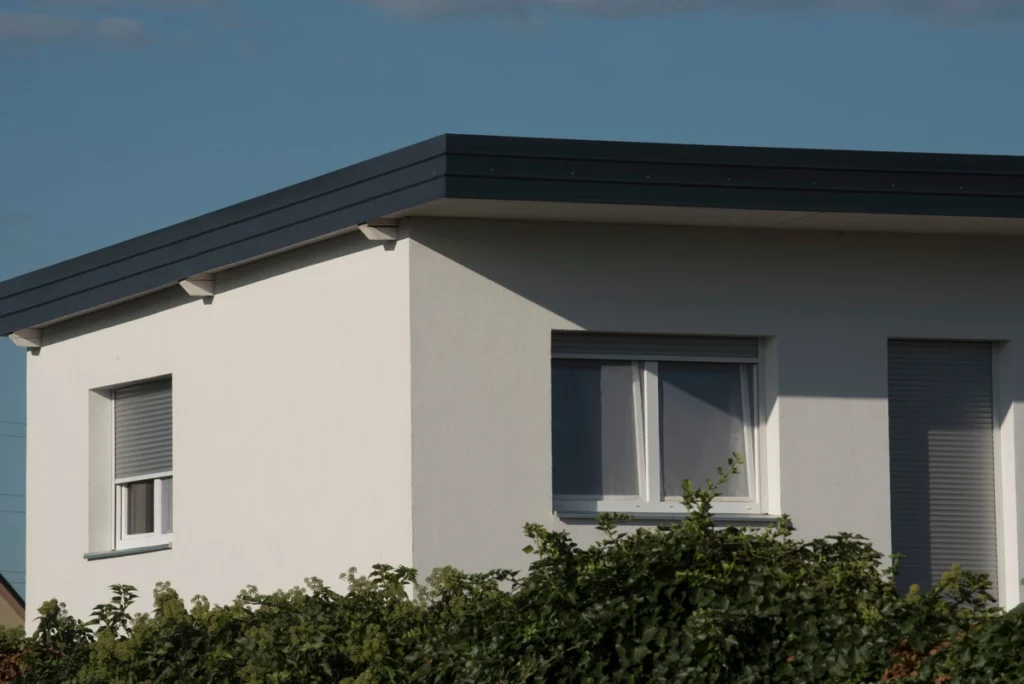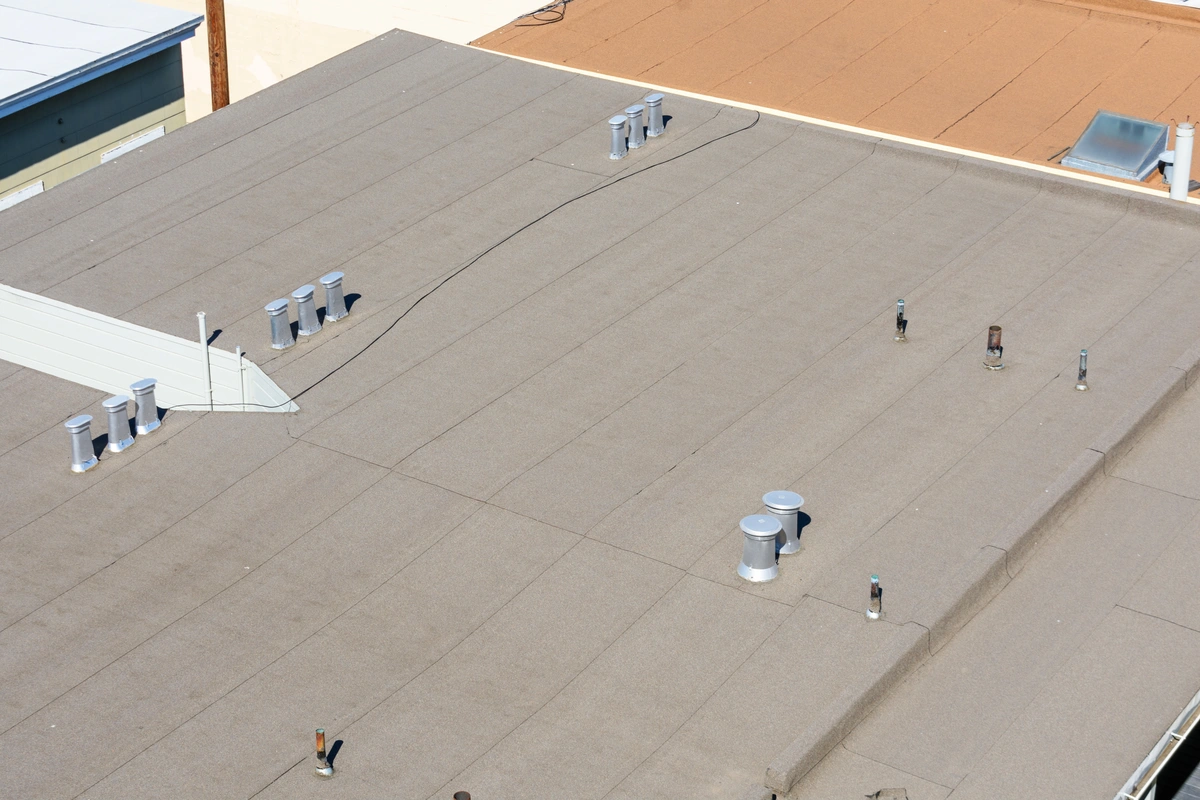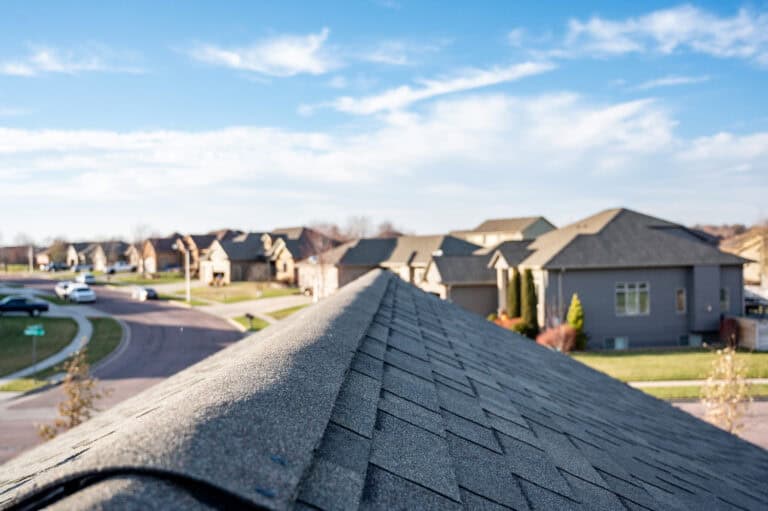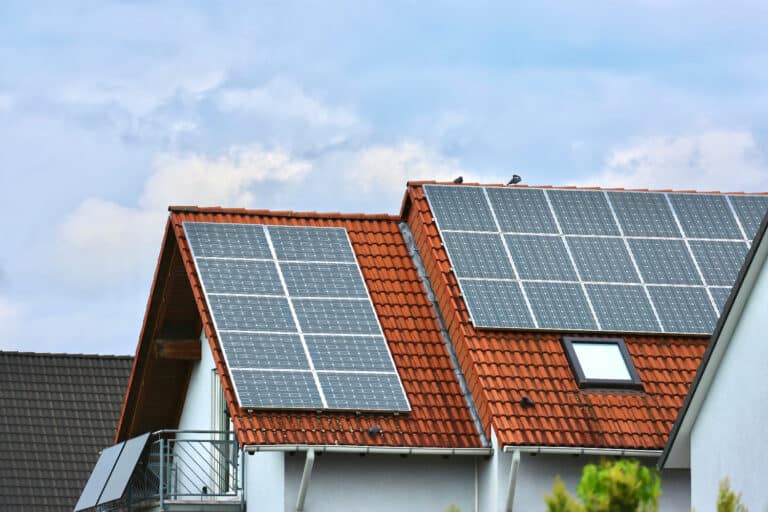Struggling with leaks in your flat roof can be frustrating and costly. Did you know that flat roof repair costs typically range from $4 to $13 per square foot?
Our step-by-step guide will walk you through how to effectively repair your flat roof, potentially saving money on expensive professional services.
- Find the source 🧐
- Inspect 🔎
- Call for assistance ☎️
Let’s dive into the world of DIY roof repair!
Locating Roof Damage

To locate roof damage, start by determining the source of the leak and then inspecting for cracks and holes.
Determining the Source of the Leak
Leaks in flat roofs are easier to locate compared to those on sloped or shingled roofs. Start by examining common culprits such as vents, chimneys, and other roof penetrations.
Should you not see obvious signs of leakage around these areas, expand your inspection to the interior and exterior of your house.
Quick fixes such as patching can alleviate immediate concerns, but for longevity, it’s crucial to identify and address the root cause of the problem in your roof leak repair strategy.
Long-term solutions may involve more complex procedures like removing old roofing materials and installing new ones or sealing small cracks strategically with appropriate sealants.
Inspecting for Cracks and Holes
Carefully look at your flat roof for any signs of cracks and holes. This process involves thorough scrutiny, as these blemishes are often the main culprits for nastier damage down the line.
Use a flashlight to help you spot even the smallest hole or crack in difficult-to-see corners.
Identifying these issues can save unnecessary expenditures in future roof repair efforts. The most common causes involve leaky seams caused by fallen branches or harsh weather conditions.
A telltale sign could be damaged flashing around pipes or vents. By nipping these problems, your flat roof has a much higher chance of retaining its long-term durability.
Steps for Flat Roof Repair

To repair a flat roof, follow these steps:
- Remove the old roof.
- Attach a new EPDM roof.
- Seal small cracks and holes.
- Apply roof patches.
- Reseal the entire roof.
Removing the Old Roof
Start by clearing any debris from the roof’s surface. Gather your necessary tools, including a roofing shovel or garden fork. Proceed carefully to avoid damaging the roofing structure underneath as you pry off old shingles or panels.
Use precautions while dealing with nails and other sharp objects to prevent injuries.
Dispose of old roofing materials responsibly, adhering to your local disposal regulations.
Attaching a New EPDM Roof
To attach a new EPDM roof, you have two options:
- Fully adhered
- Mechanically attached
Before starting the installation process, preparing the surface properly is important. Special adhesives are used to bond the EPDM membrane to the roof substrate for fully adhered roofing.
On the other hand, mechanical attachment involves securing the EPDM membrane using fasteners and plates. Whichever method you choose, seal the edges with tape sealing for added protection against leaks.
By opting for an EPDM roof, you can enjoy a fast and efficient flat roof repair that offers durability and flexibility for low-slope roofs.
Sealing Small Cracks and Holes
Sealing small cracks and holes is crucial in repairing a flat roof. These minor damages lead to leaks if left untreated. Fortunately, fixing them is relatively simple.
Applying rubber sealant directly to the problem area solves small holes and punctures. For blistering and small holes, roofing cement, fiberglass mesh, and gravel can make the necessary repairs.
Applying sealant prevents leakage and helps maintain the integrity of your roof. It provides a protective barrier against moisture that could seep into underlying layers.
Applying Roof Patches
To repair a flat roof, applying roof patches is an essential step. Rubber roof patches, roofing tar, and adhesive patches are used. The first step is cleaning the damaged area and removing debris or loose material.
Next, apply the patching material over the damaged section, covering it completely. Press down firmly to ensure a tight seal. Finally, allow the patch to dry thoroughly before checking for leaks.
Following these steps and using the right materials can effectively repair your flat roof and prevent further damage.
Resealing the Roof
To complete the flat roof repair, resealing the roof is crucial. This helps to ensure no further leaks and provides added protection against future damage. Using a liquid roof coating product, carefully apply it over the entire surface of the repaired area.
Follow the manufacturer’s instructions for proper application and allow sufficient drying time. Resealing the roof will help to extend its lifespan and prevent any potential issues down the line.
Take this opportunity to inspect the rest of your roof for any signs of wear or damage that may need attention to keep your flat roof in good condition for years.
Tips for Successful Flat Roof Repair

Properly prepare the surface by cleaning it thoroughly and removing debris or loose materials.
Properly Preparing the Surface
Properly preparing the surface is crucial in successfully repairing a flat roof. Before beginning any repairs, it’s important to inspect the entire surface of the roof to identify any damage or issues that need attention.
Once you’ve identified the damaged spots, applying a top coat of wet patch with a putty knife is recommended for repair.
Additionally, using roofing cement or sealant around the damaged area will help provide extra protection and ensure a long-lasting fix. By preparing the surface properly, you can ensure that your flat roof repair will maintain its longevity over time.
Using the Right Materials and Tools
Using the right materials and tools ensures a successful flat roof repair. Having the proper tools will make the job more efficient. Look for fiberglass roofing kits that include shingles, nails, and weatherproof sealants.
Additionally, gather other necessary materials like plywood before starting any repairs. Different flat roofs require specific repair techniques, so be sure to have the appropriate materials for your particular roof type.
Remember about acrylic-based waterproofing paint for treating split felt and small gaps in your flat roof. Using the right materials and tools will set you up for a successful flat roof repair project without any unnecessary complications.
Understanding Flat Roof Repair
Repairing a flat roof can be manageable. You can easily locate and fix any damage by following the step-by-step guide. Use the right materials and tools, prepare the surface properly, and seal all cracks and holes effectively.
You can successfully repair your flat roof and prevent further leaks or issues. Contact us today to assist you with any flat roof repair you need.




